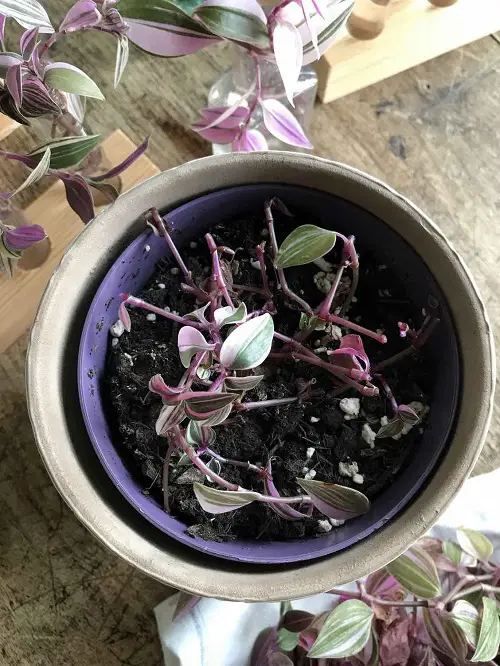It’s the new year 2025, and if you’re thinking about what to plant in your home in January or February for your garden, we have the best options!
Gardening enthusiasts are not left with too many choices when winter approaches. Colder months bring unique challenges, but as they subside, this brings opportunities to grow the choicest seeds, bulbs, and cuttings, if not outdoors, you can do all this indoors.
Things to Plant in January or February
1. Seeds are Always a Good Idea
If you are planning to start seeds indoors, then you are in for luck! Thanks to the controlled environment, there are some pretty good options for you.
Selecting the right seeds depends on your climate, so search specifically for them; some of the best ones we can suggest are:
You can go for Coleus, begonia, and African violets – these are great for indoor germination.
If you are looking for flowers, Marigolds, Petunias, Zinnias, and Snapdragons are some colorful choices! Do not forget to grow herbs like basil, cilantro, parsley, and dill!
Important: Start the seeds in trays and use heating mats. If indirect sunlight is not sufficient, grow lights will also support and speed up the germination process.
2. Propagate Succulents from Leaves!

As these months are devoid of any humidity, you must not miss growing succulents like Crassula, Echeveria, Sedum, and Graptopetalum. These varieties are really easy to propagate from a single, healthy leaf.
Just make sure you use a good quality succulent mix and provide ample warmth and light; you can even do it on top of a refrigerator if it receives indirect light.
If you are looking for options other than succulents, then African Violet and Rex Begonia are worthy contenders. (I have linked them both with our detailed articles on how to grow them from the leaf for you!)
Note: Providing enough light is the key to growing these plants. You can also go for grow lights if necessary.
3. Don’t Forget the Veggies!

These cold months are good for starting vegetables indoors and getting ready for the upcoming growing season.
Some of the best ones you can begin with are the most usual ones, of course, or those you eat a lot – like tomatoes, peppers, broccoli, cauliflower, eggplants, lettuce, spinach, and kale.
These veggies are excellent for early planting, and you can grow their seeds in a well-draining potting mix, in either seed trays or pots. They also do well under grow lights so that you can enjoy the harvest in no time!
Are there Any Options for Planting Outside?
Good, you asked! Carrots, Peas, Broad beans, and Radishes are quite strong to take on the battle with cold! You can plant them directly in the garden, provided the ground is not completely frozen and the soil is workable – the better idea is – to grow them in raised beds.
4. What About Flowering Bulbs?
Oh yes! Why leave the colorful blooms behind in winter?
Tulips, Snowdrops, Winter Aconites, and Hyacinths – these are the first ones to bloom in spring. However, plant them only when the ground hasn’t frozen solid.
Do ensure that you pick a spot that gets a few hours of sunlight, and plant them a little early in January so that their roots get enough time to establish themselves.
Pro Tip: If you are planning to start bulbs indoors, add bulbs like amaryllis, paperwhites, and certain varieties of tulips and pre-chilled daffodils. You can plant them in containers and keep them in a dark place for some period – when you see shoots, move them to a spot where they get a few hours of sun (Or use grow lights). This way, you can certainly coax them to bloom indoors!
5. Are There Any Choices for Growing Plants from Cuttings?

Yes! Why not! Hardwood cuttings are the best for these months, especially if you’ll take them from mature stems in late fall or winter. Why these? Well, they are more robust, enabling them to withstand the harsher conditions of winter.
Dogwood, Willow, Hydrangea, Forsythia, Figs, and Grapes – these are great for propagating directly in the ground, as long as it is not frozen completely solid and receive a few hours of sunlight every day.
To increase the chances of propagation, make sure you take cuttings that are at least 8-12 inches long. Cut them at a diagonal angle to increase the surface area for rooting.
For outdoors, it is important that you plant these cuttings at the correct depth, with two-thirds of the length buried in the soil, to provide stability and encourage root development.
Note: If you live in a region with extreme weather conditions and heavy frost, then you might not be able to plant these in the garden. For this, you can start them indoors in a well-draining pot and keep them where they get warmth and a good amount of indirect light every day.
Philodendrons, Pothos, Jade Plant, Wandering Dude, and Dracaena are some of the best choices for indoor propagation. Rosemary, Basil, and mints are also great picks when it comes to herbs!




